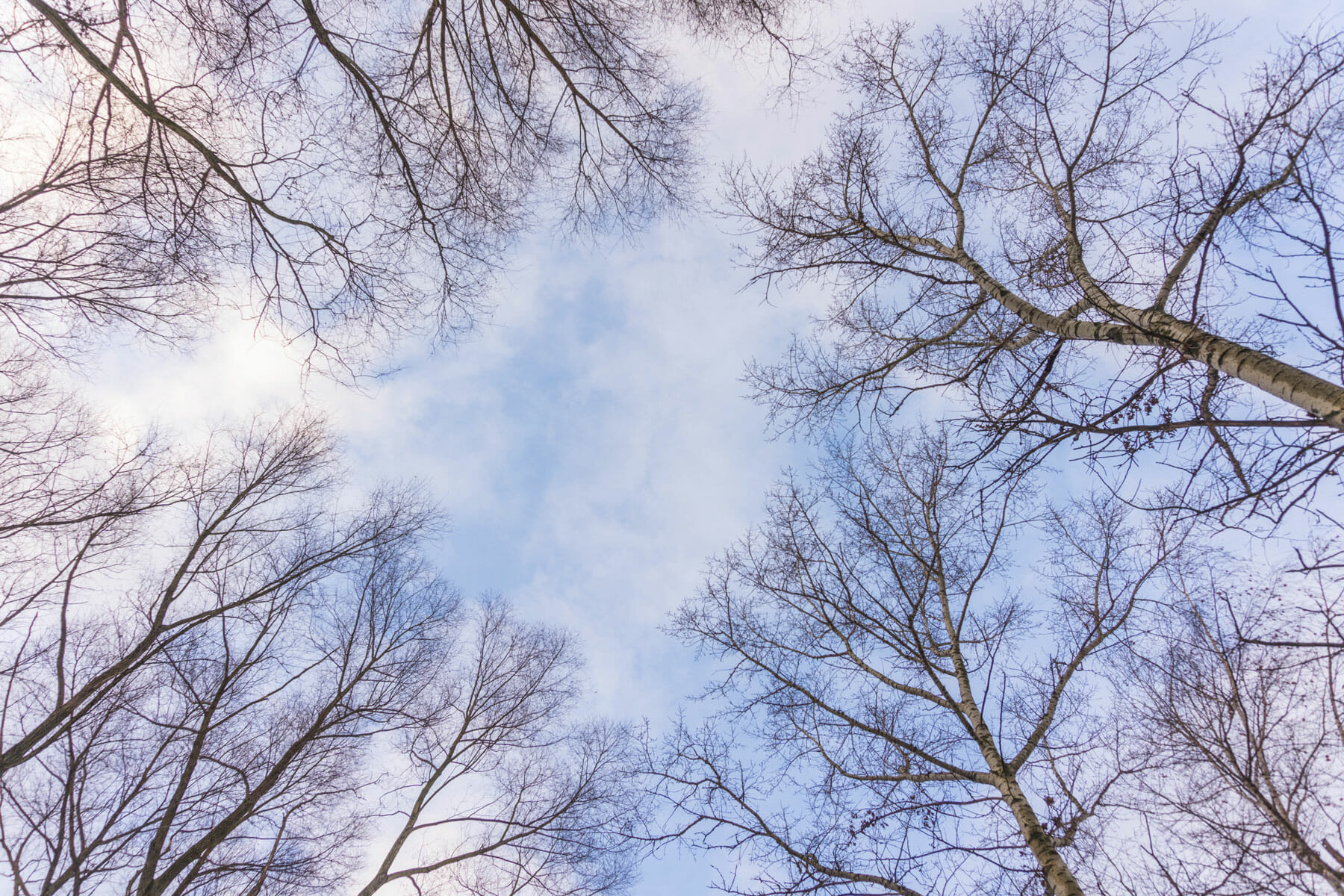Deciduous trees are often the indicators of the coming seasons; fresh buds on trees signal the arrival of spring, green leaves are a sure sign of summer, and falling leaves signal the arrival of autumn. After the leaves have dropped and the cold winter months set in, it can be difficult to tell if your tree has gone dormant or if it has died. In this post, we’ll discuss how to know if a tree is dead or dormant.
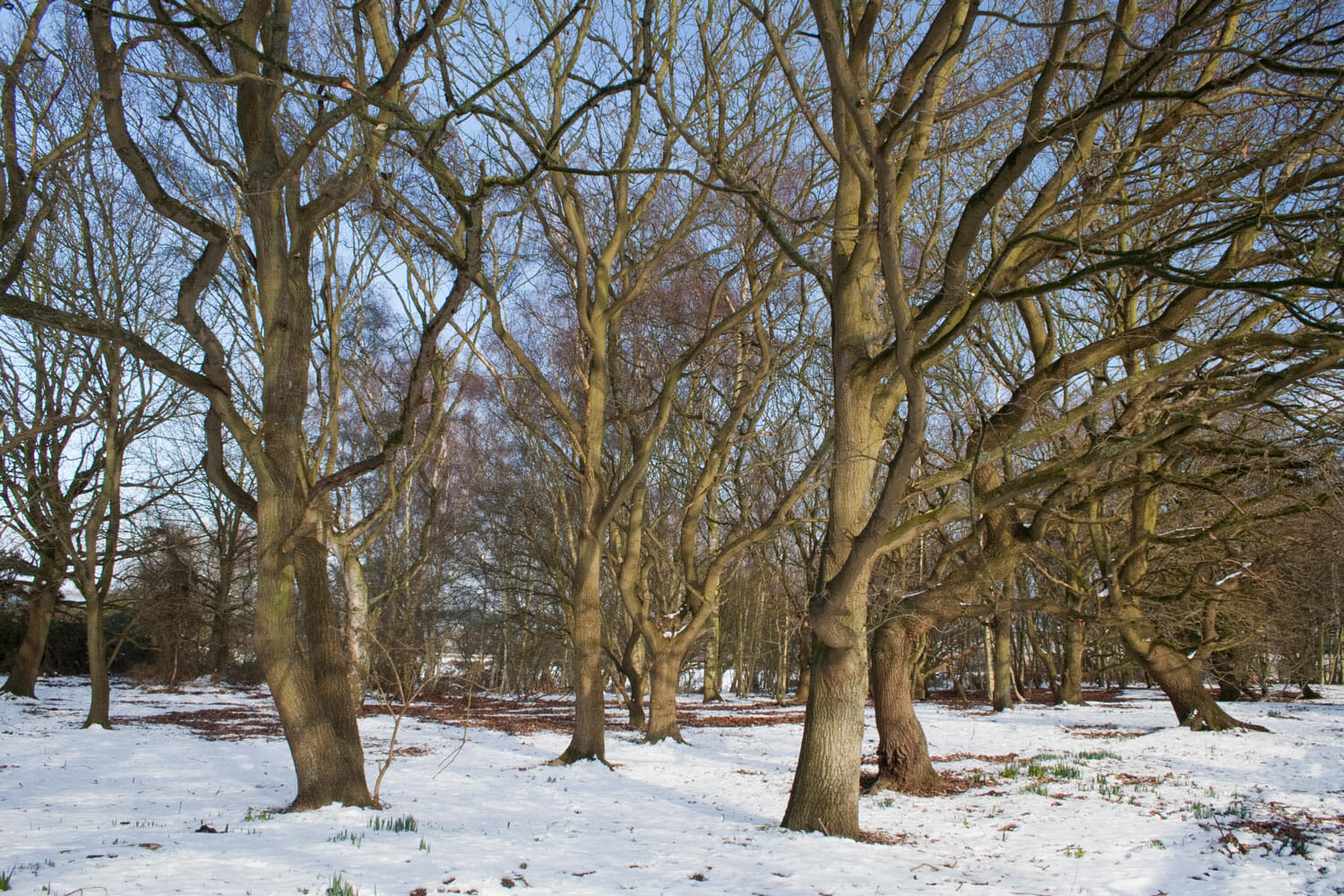
What is Tree Dormancy?
Two of the most common questions homeowners have for us are: What is a dormant tree? And How do I know if a tree is dormant? Essentially, a dormant tree is one that is resting. Consider a dormant tree similar to a hibernating animal — it’s simply reserving much of its energy for the future. Let’s talk more about tree dormancy and what you can do to protect your trees while they are dormant.
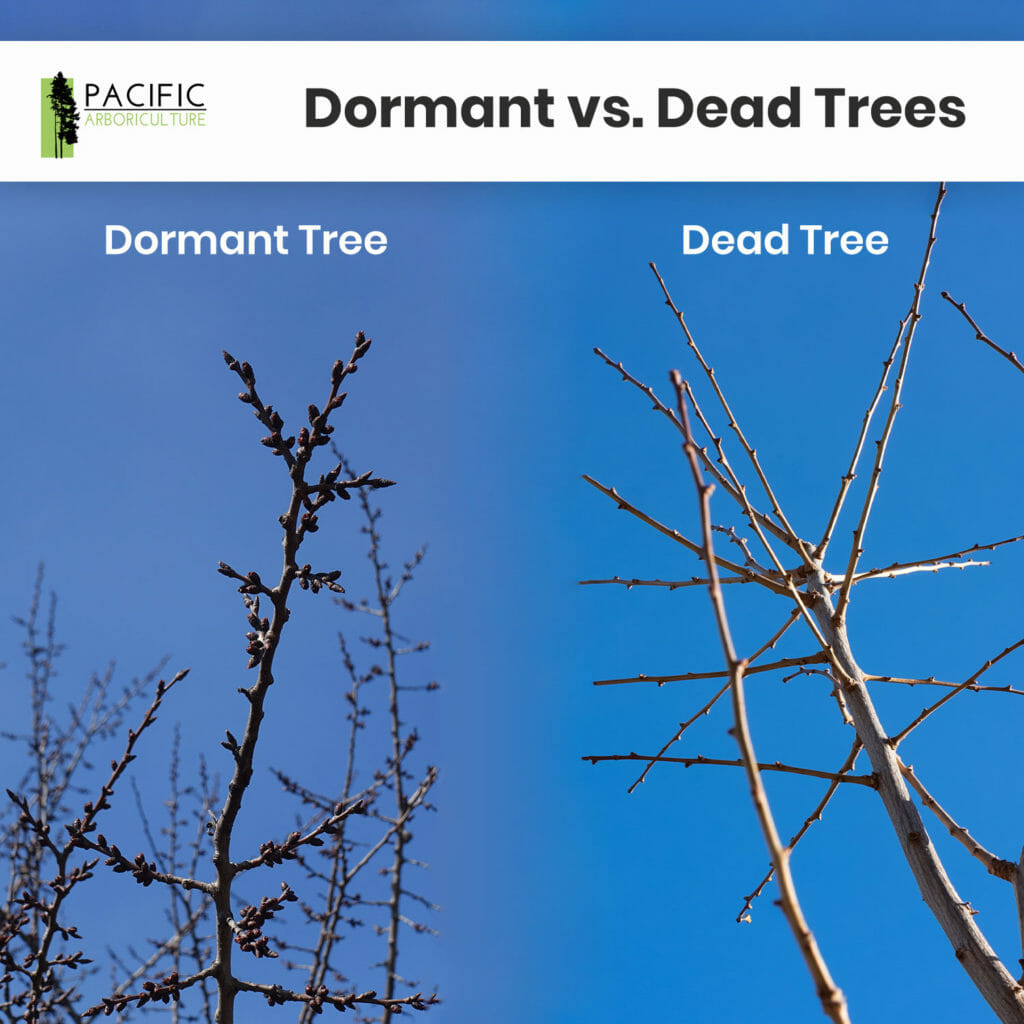
When are Trees Dormant?
In fall, the temperatures begin to drop, which triggers a change in leaf color on deciduous trees. This begins the dormancy process, during which the tree undergoes metabolic adjustments to protect itself during the cold winter months. By dropping their leaves, trees can reduce water loss. Instead of using their energy to grow and maintain the leaves, trees use their energy during dormancy to stabilize and develop their root system beneath the ground.
Preserving Dormant Trees
Deciduous trees are good at taking care of themselves over the long winter months, but you can do a few things to take care of your trees during this cold season.
- Mulch – Mulching around the tree’s base during the fall will help provide insulation for the roots. To do this, you can use a thick layer of mulch or the leaves that have fallen from the tree.
- Water – Dormant trees may need supplemental moisture throughout the winter if they are not receiving any from their environment. The adequate amount of water that your tree needs can vary depending on the species, age, and local geography. If you think your tree needs water, you can water the area outside the trunk with a soaker hose.
- Fertilize – Deciduous trees can significantly benefit from being fertilized at the end of winter in preparation for the spring months. Use a fertilizer that’s specially formulated for trees.
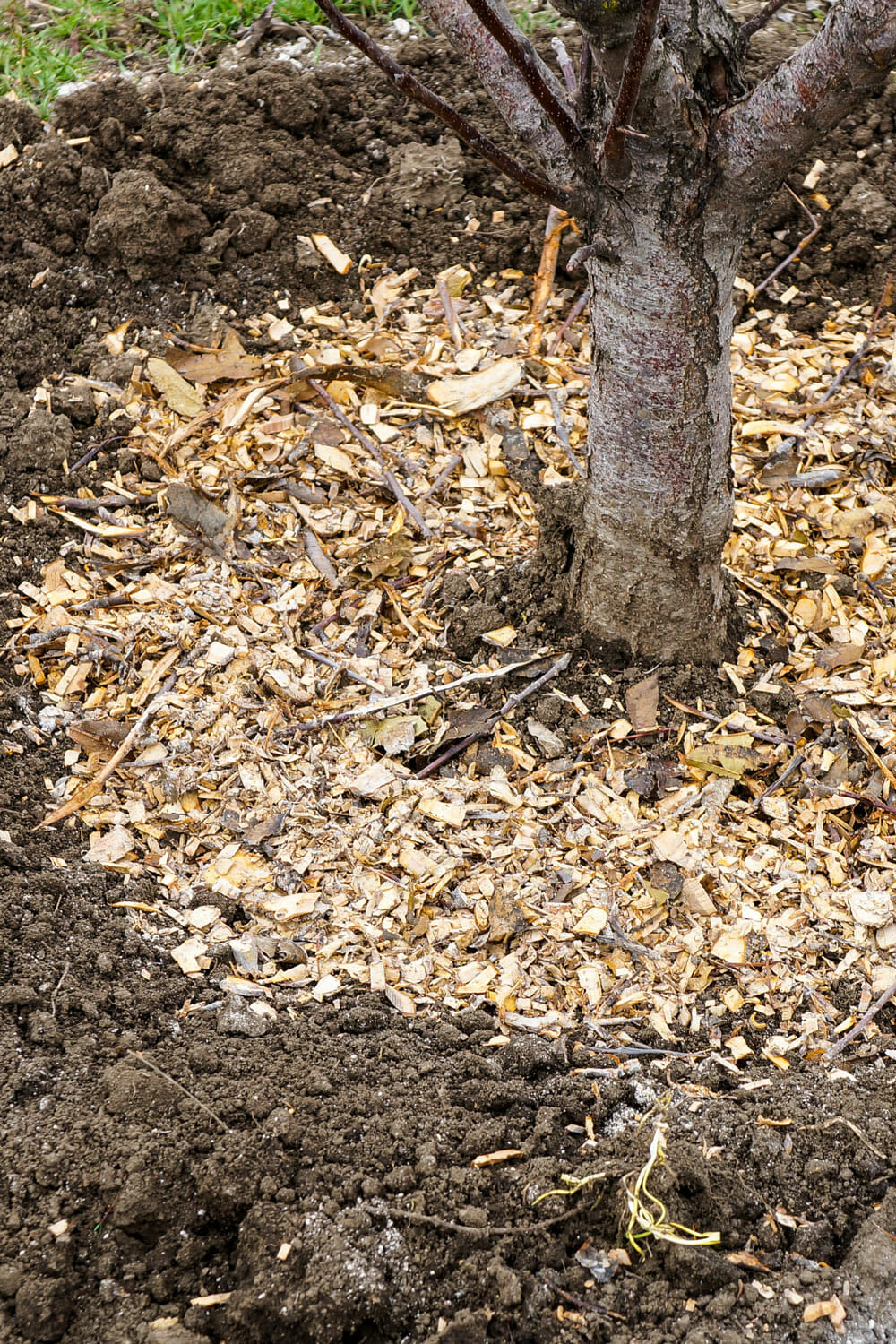
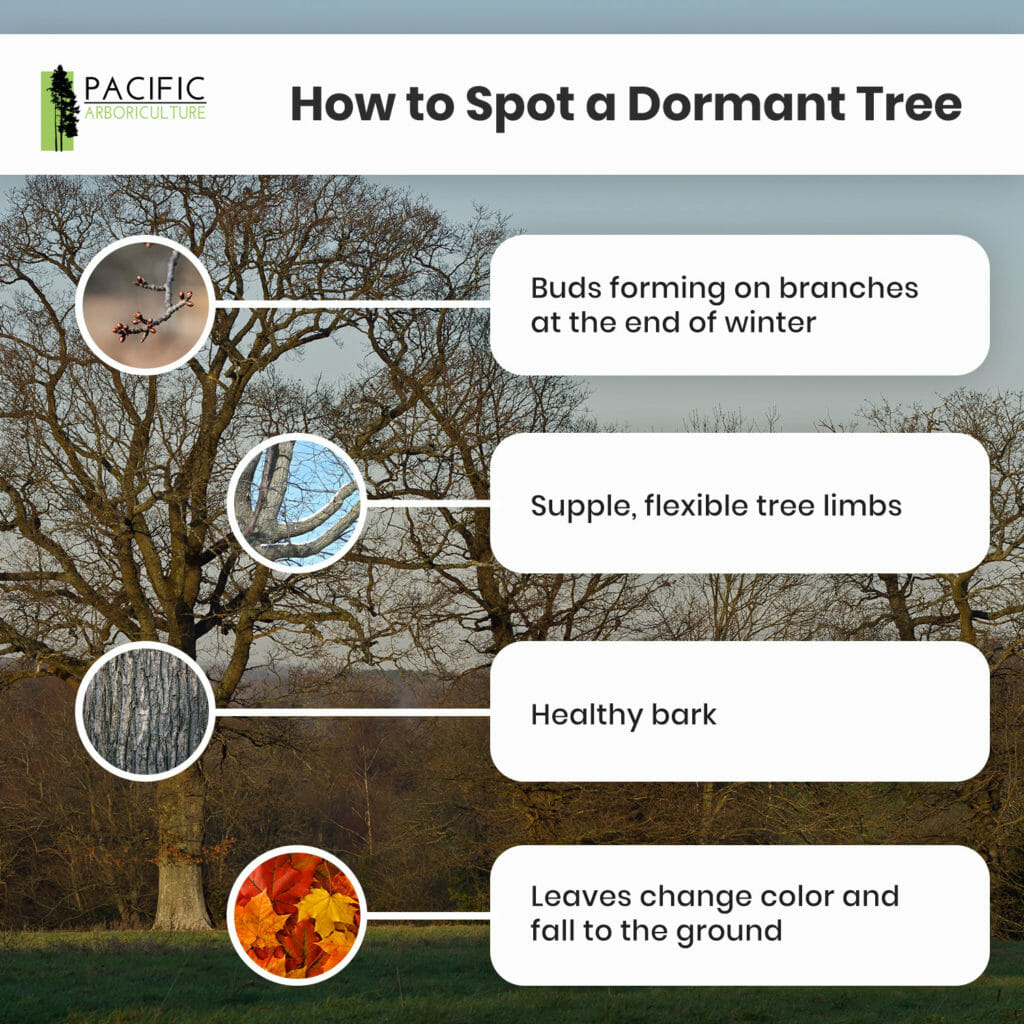
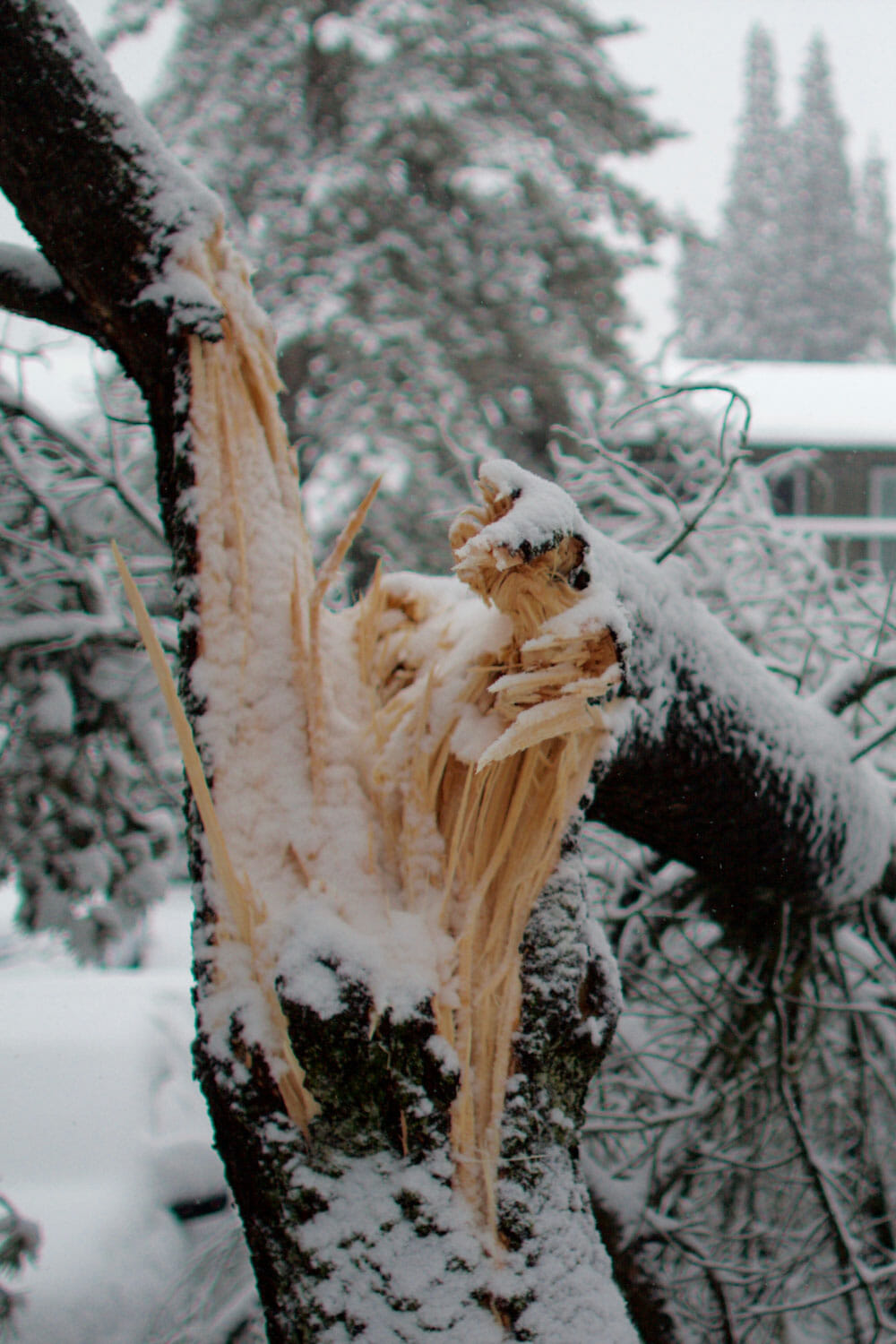
How to Spot a Dormant Tree
So, what is a dormant tree, and how can you spot one? The first sign of dormancy begins when the trees change color, then eventually drop to the ground. The tree will be bare throughout the winter, but there will be signs of life, such as buds forming on the end of the branches. The tree’s bark will still appear healthy, and the limbs will be supple and flexible.
How to Tell if a Tree is Dead
The difference between a dormant tree and a dead tree may be hard to spot from a distance but is easier to see once you’re close to the tree. If you’re concerned that your tree may have died instead of going dormant, you can check for signs of life on the tree. First, start by doing a small scratch test on the bark’s outer side to reveal the tree’s second layer. If you do this scratch test and the layer underneath is green, your tree is still alive.
Next, bend a small, year-old twig on the tree. Your tree is likely dead if the twig is brittle, breaks, and does not seem supple. You can also inspect the tree’s trunk for horizontal cracks, fungus, peeling bark, or decay. Lastly, if your tree does not sprout buds or leaves — or the buds fall off quickly — that might mean bad news for your tree.
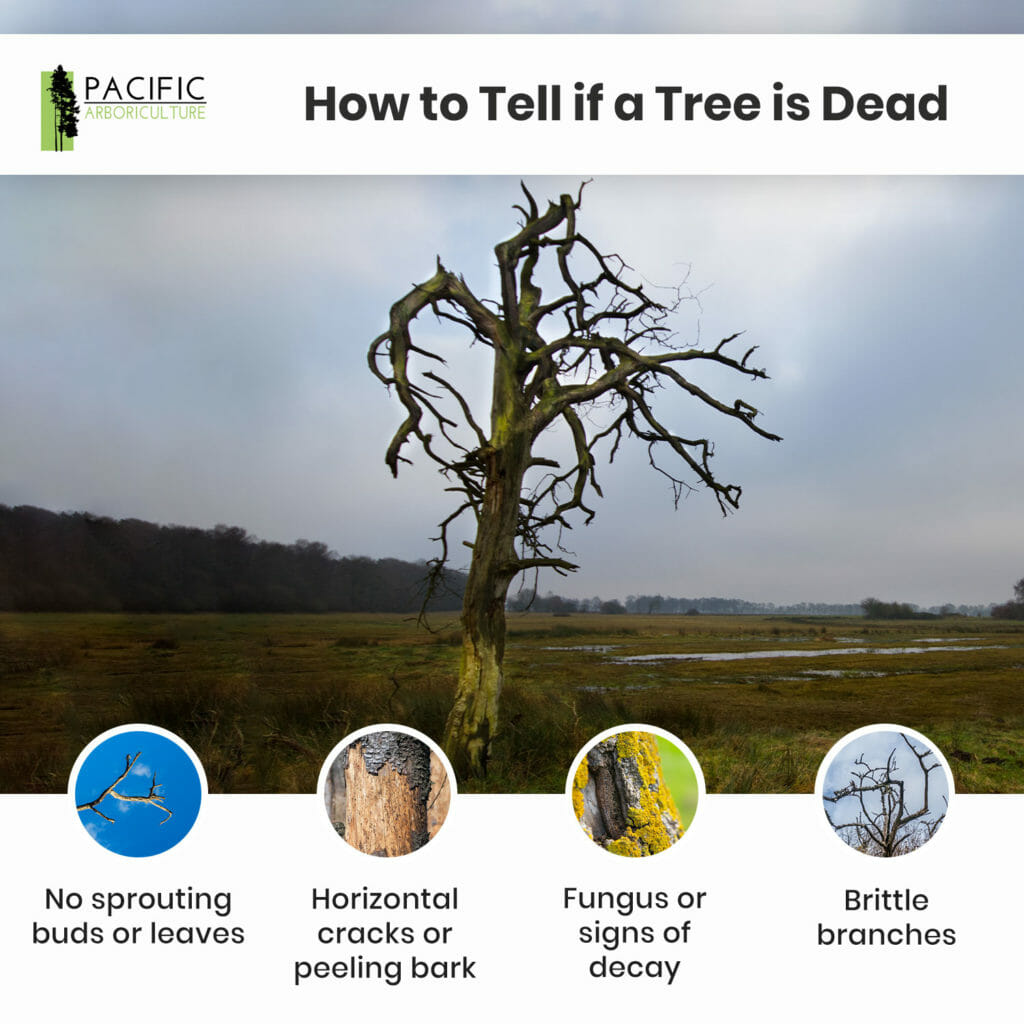
Tree Removal for Dead Trees
Losing a much-beloved tree on your property is always unfortunate. But it’s always a good idea to remove the tree before it damages your property or others. Dead trees more easily lose limbs, a safety hazard that can cause expensive property damage. The tree will also undergo additional damage throughout the seasons as snow and wind run the risk of continuing to break off limbs. Tree removal companies, such as Pacific Arboriculture, will come to evaluate your tree, determine that it has died, and remove it safely and securely.
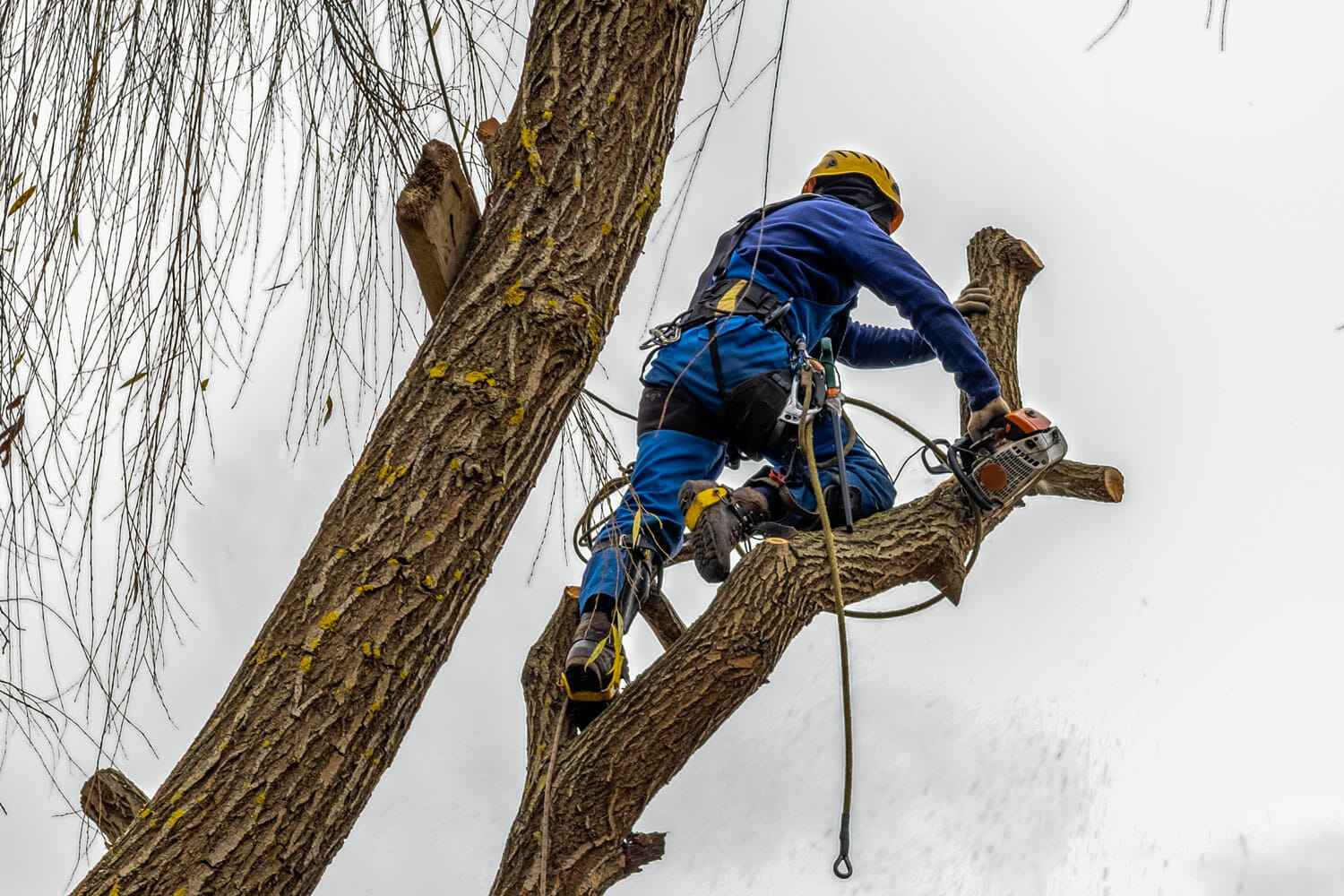
Dormant or Dead, Pacific Arboriculture Can Help
Pacific Arboriculture are experts in tree removal in the Greater Seattle area. Our ISA-certified arborists and certified tree risk assessors will determine if they can save your struggling tree, or if removal is the only option. Our arborists use their equipment and years of experience to remove the tree safely and can even grind the stump for you. Perhaps your tree can benefit from a pruning service? We can do that, too. For certified and insured residential tree services in Washington, you can trust Pacific Arboriculture. Get a free quote for tree care and removal today!

